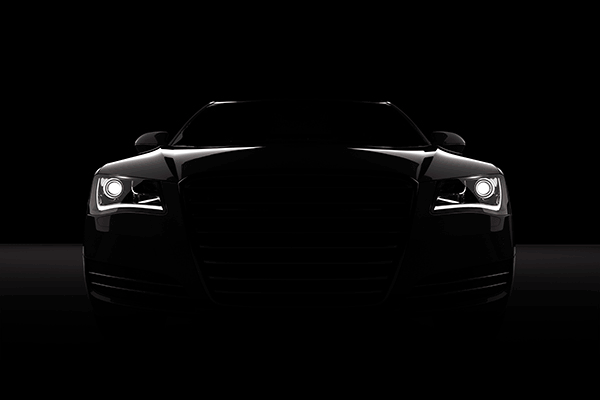Unknown Facts About Hikari Led Headlight
Table of ContentsThe Greatest Guide To Hikari Led HeadlightThe smart Trick of Hikari Led Headlight That Nobody is DiscussingAn Unbiased View of Hikari Led Headlight
A headlamp system is required to produce a low and a high beam, which might be produced by numerous sets of single-beam lamps or by a pair of dual-beam lights, or a mix of single-beam and dual-beam lights. High beams cast the majority of their light straight ahead, optimizing seeing distance but producing excessive glare for safe usage when other cars exist on the roadway.Low beams have stricter control of upward light, and direct the majority of their light down and either rightward (in right-traffic nations) or leftward (in left-traffic countries), to supply forward exposure without excessive glare or backdazzle. Low beam (dipped beam, passing beam, meeting beam) headlamps supply a distribution of light designed to provide forward and lateral lighting, with limitations on light directed towards the eyes of other road users to control glare.


A lot of low-beam headlamps are specifically designed for usage on only one side of the roadway. Headlamps for use in left-traffic countries have low-beam headlamps that "dip to the left"; the light is distributed with a downward/leftward predisposition to reveal the chauffeur the road and indications ahead without blinding approaching traffic.

About Hikari Led Headlight
Lots of tungsten (pre-halogen) European-code headlamps made in France by Cibi, Marchal, and Ducellier might be gotten used to produce either a left- or a right-traffic low beam by means of a two-position bulb holder. Because wrong-side-of-road headlamps blind oncoming drivers and do not effectively light the chauffeur's method, and blackout strips and adhesive prismatic lenses decrease the security efficiency of the headlamps, some countries need all cars registered or utilized on a long-term or semi-permanent basis within the country to be equipped with headlamps created for the appropriate traffic-handedness.
Lorry headlamps have actually been discovered not able to light up an ensured clear distance ahead at speeds above 60 km/h (40 mph). It might be hazardous and, in a few locations, illegal to drive webpage above this speed during the night. Some nations need automobiles to be geared up with daytime running lights (DRL) to increase the conspicuity of lorries in movement throughout the daytime.
In Canada the DRL function needed on vehicles made or imported because 1990 can be supplied by the headlamps, the fog lights, steady-lit operation of the front turn signals, or by unique daytime running lights. Functionally committed daytime running lamps not involving the headlamps are required on all new automobiles first offered in the European Union considering that February 2011.
Japan previously had bespoke lighting guidelines similar to the United States standards, but for the left side index of the roadway. However, Japan now adheres to the ECE standard. The distinctions between the SAE and ECE headlamp standards are mostly in the quantity of glare allowed toward other chauffeurs on low beam (SAE allows much more glare), the minimum amount of light needed to be thrown directly down the road (SAE requires more), and the particular areas within the beam at which minimum and maximum light levels are defined.
Below the line is bright, and above is dark. On the side of the beam facing far from approaching traffic (right in right-traffic nations, left in left-traffic countries), this cutoff sweeps or steps up to direct light to road indications and pedestrians. SAE low beams may or may not have a cutoff, and if a cutoff exists, it may be of two different basic types: VOL, which is conceptually similar to the ECE beam because the cutoff is situated at the top of the left side of the beam and intended slightly listed below horizontal, or VOR, which has the cutoff at the top of the ideal side you can try here of the beam and targeted at the horizon.
Comparative studies have consistently shown that there is little or no overall safety advantage to either SAE or ECE beams; the 2 systems' acceptance and rejection by various nations is based mainly on which system is currently in usage. In North America, the style, efficiency and setup of all motor car lighting devices are managed by Federal and Canada Motor Vehicle Security Standard 108, which incorporates SAE technical standards.
6 Simple Techniques For Hikari Led Headlight
United States laws required sealed beam headlamps on all cars between 1940 and 1983, and other nations such as Japan, United Kingdom and Australia likewise made comprehensive usage of sealed beams. [] In most other countries, and in the US since 1984, replaceable-bulb headlamps predominate. Headlamps should be kept in appropriate aim.
In the United States, SAE basic headlamps are intended without regard to headlamp mounting height. This gives vehicles with high-mounted headlamps a seeing distance advantage, at the cost of increased glare to drivers in lower automobiles - hikari led headlight. By contrast, ECE headlamp objective angle is connected to headlamp installing height, to give all automobiles roughly equal seeing range and all motorists approximately equal glare.